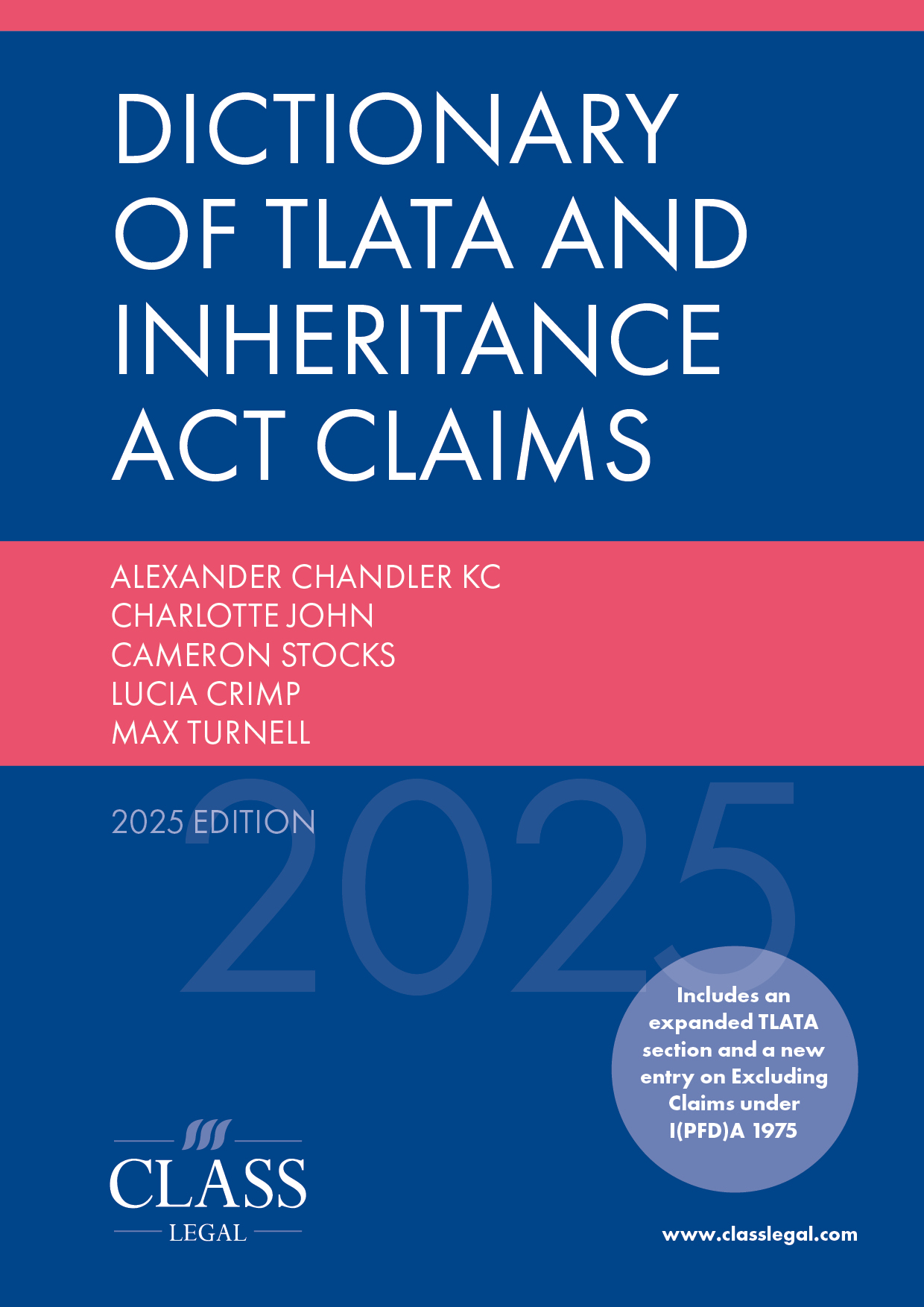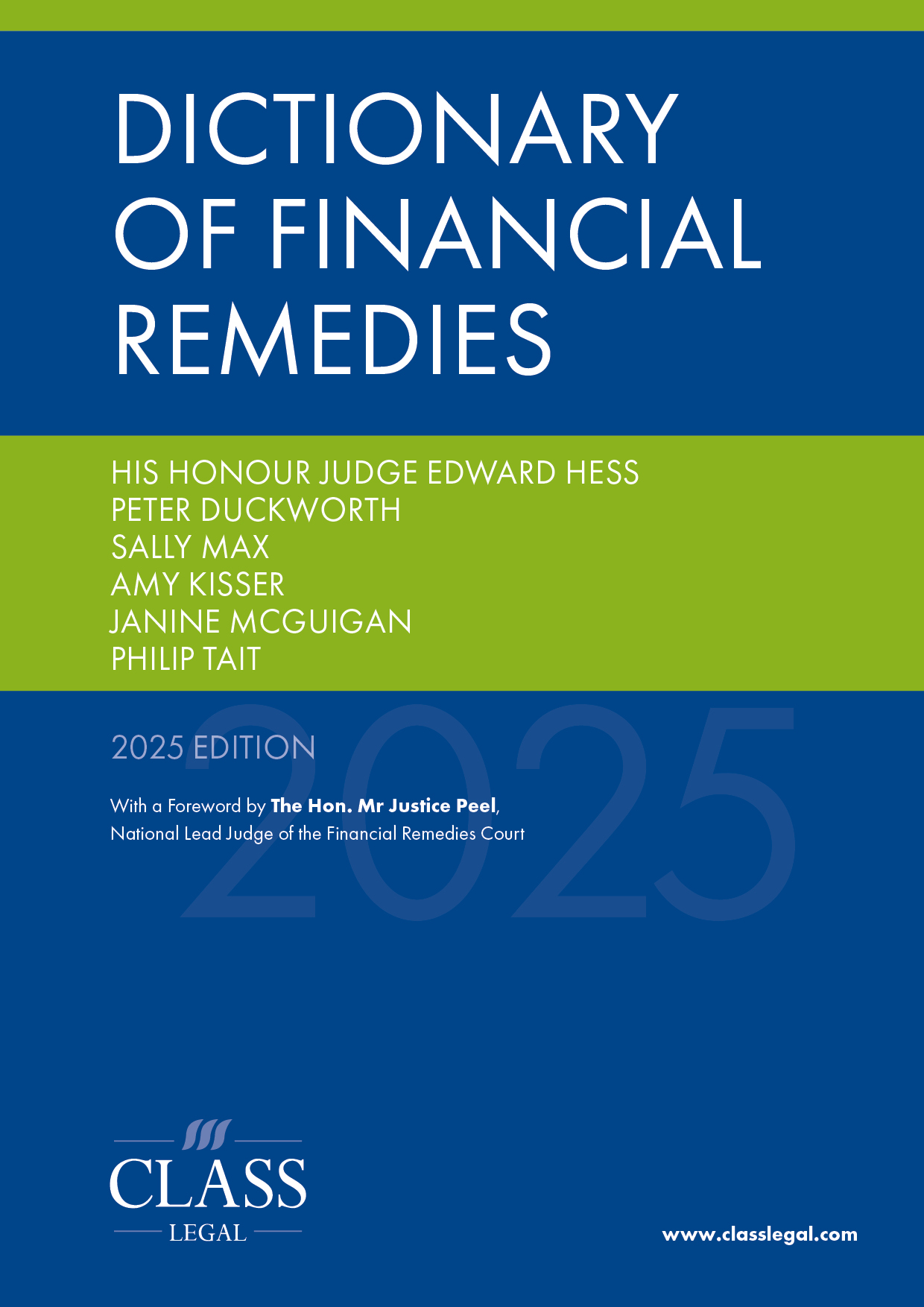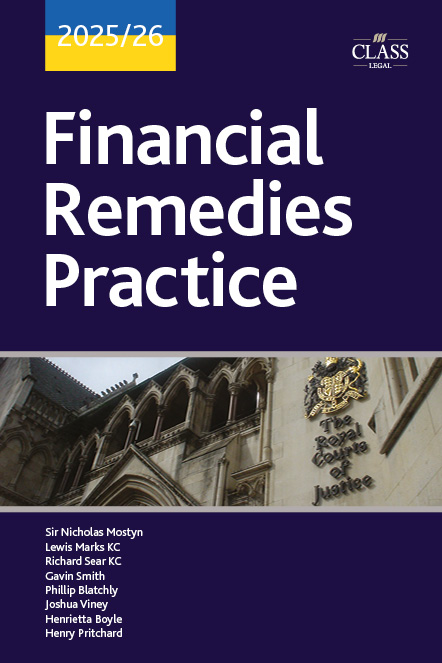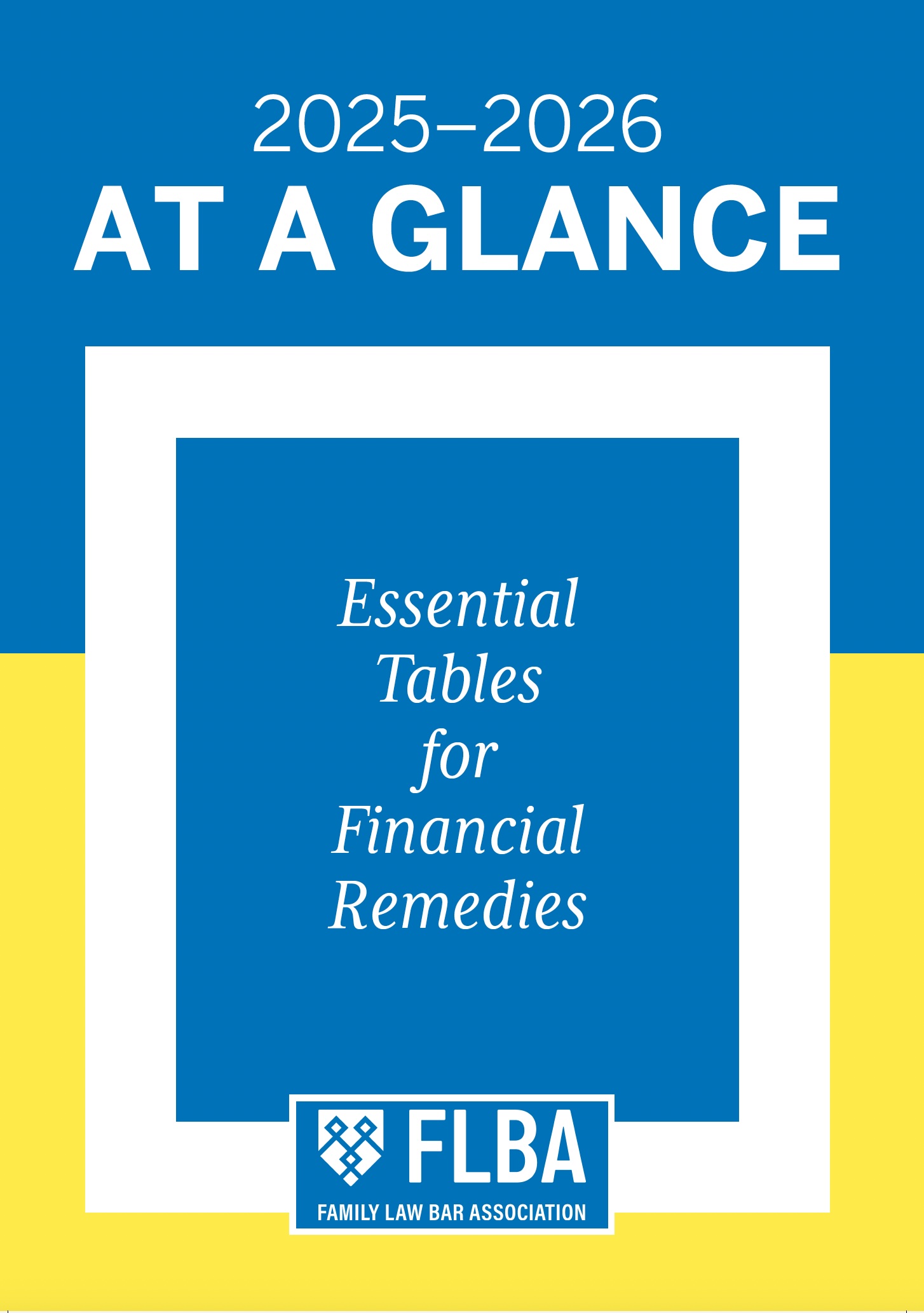
Final Reflections on Standish: Was It All Worthwhile?
Published: 09/07/2025 10:15

If asked, Mr Standish may say that three rounds of litigation, with another to follow, were worth it – Mrs Standish, perhaps not. But for lawyers, with many questions left unanswered, and a feeling that the opportunity to settle the law on matrimonialisation with clarity and certainty has passed us by, it may not have been worthwhile.
Mr and Mrs Standish have become household names for financial remedy practitioners. A case centring on an £80m tax savings scheme gone wrong; the tabloid headlines write themselves. But there was a real sense of anticipation for financial remedy practitioners waking up on Wednesday morning, ready for the handing down of the judgment, just 65 days after the hearing. This decision had the potential to be the most significant since that of the House of Lords in Miller; McFarlane [2006] UKHL 24 19 years ago.
At 09:45 on Wednesday 2 July 2025, Lord Burrows delivered the Supreme Court’s judgment: Mrs Standish’s appeal was dismissed.
Did the judgment live up to expectations? Did it leave any lingering questions? Did it provide the certainty many are seeking? Or is it the precipitator of a new round of litigation? This article explores the court’s judgment and the effect it may have on future litigation.
The road to the Supreme Court
The background facts are now known to all, but the journey to the Supreme Court is worth recollecting.
At first instance, the resources totalled £132m. Of that, £112m was deemed matrimonial, including an £80m portfolio of investments transferred to Mrs Standish by Mr Standish in 2017 (‘the 2017 Assets’). Moor J held that the transfer of the 2017 Assets had matrimonialised them. They had become matrimonial property. However, to reflect their ‘significant’ non-matrimonial source, Moor J divided the 2017 Assets 60/40 in H’s favour. Put another way, 80% / £64m was matrimonial and subject to the sharing principle, and 20% / £16m was non-matrimonial and to be retained by Mr Standish.
Mr and Mrs Standish were left with £87.6m and £45m respectively. Both appealed, arguing that the 2017 Assets were their separate property.
Mr Standish won. Giving the leading judgment of the Court of Appeal, Moylan LJ concluded that the transfer had not matrimonialised the 2017 Assets because, although title had changed, it was the source of the assets which was determinative. Accordingly, Moor J’s findings that the 2017 Assets were ‘in significant part’ generated before the marriage and that only ‘an element’ was pre-marital, were not reflected in his award. In other words, £16m is not a ‘significant part’ of £80m. Moylan LJ found that 75% / £60m better reflected those findings and gave due weight to the source of the 2017 Assets, rather than their title. As a result, Mrs Standish’s sharing claim was slashed from £45m to £25m.
Unsurprisingly, Mrs Standish sought permission to appeal again. She abandoned her argument that the 2017 Assets were her separate property and instead complained that the Court of Appeal was wrong to conclude that the transfer had not matrimonialised the 2017 Assets at all. On that sole ground, permission was granted.
The Supreme Court
The appeal came before the Supreme Court and was heard on 30 April and 1 May 2025. In their leading judgment, Lord Burrows and Lord Stephens (with whom Lord Reed, Lord Lloyd-Jones and Lady Simler agreed) formulated the question they were required to determine as follows:
‘How does the sharing principle apply where, a relatively short time before the divorce, the husband made a transfer of assets (“the 2017 Assets”), worth some £80 million, to the wife for the purpose of setting up a trust to negate inheritance tax and where, at the date of the divorce, the wife had not set up the trusts and retains the assets?’ [6]
In answering that question, the court clarified several foundational and guiding legal principles on matrimonialisation:
- There is a conceptual distinction between matrimonial property and non-matrimonial property which, in general terms, turns on the source of the assets. Title is not determinative in deciding what is and what is not matrimonial property; [47].
- The sharing principle applies to matrimonial property and does not apply to non-matrimonial property; [49].
- Although there can be justified departures, equal sharing of matrimonial property is the appropriate and principled starting position; [50].
- Non-matrimonial property may become matrimonial property. Matrimonialisation is the process by which this occurs. In respect of matrimonialisation:
- Wilson LJ’s obiter dicta in K v L [2011] EWCA Civ 550 at [18] were correct but not exhaustive; [51]–[52].
- Disagreeing with Moylan LJ, there is no good reason to confine the principle; it is neither narrow nor wide; [51]–[52].
- Matrimonialisation rests on the parties, over time, treating the assets as shared. What is important is to consider how the parties have dealt with the asset and whether the facts demonstrate that, over time, they have treated the assets as shared between them. The period of time must be sufficiently long for the parties’ treatment of the asset as shared to be regarded as settled; [51]–[53].
- The parties’ intentions are important as to whether an asset is or is not matrimonialised. There must be an intention to benefit the other spouse, not just the parties’ children; [53] and [62].
- The sharing principle aims to achieve a fair outcome. The parties’ treatment of non-matrimonial property as being shared between them is central in deciding the fairness of treating that property as matrimonialised.
- Tax saving schemes whereby one spouse transfers an asset to the other spouse do not normally show that the asset is being treated as shared between them, regardless of the period involved. Where a capital asset has been transferred between spouses to save tax, compelling evidence will be required to establish that the parties have treated the asset as shared between them.
Applying those principles, the Supreme Court found no reason to interfere with Moylan LJ’s conclusion that the 2017 Assets had not been matrimonialised; not because the source of the assets was determinative but because the transfer did not demonstrate an acceptance that the 2017 Assets would be shared with Mrs Standish. The transfer, which was accepted by both parties, was the consequence of a tax-saving scheme intended ultimately to benefit the children. An intention to share with Mrs Standish could not be established on the facts.
In the article here it was suggested that had the intention been for Mrs Standish to hold the assets and to apply them for the benefit of the family (not exclusively for the children), the outcome may have been different. This decision confirms that the suggestion was correct.
‘Neither narrow nor wide’
Moylan LJ’s judgment in the Court of Appeal narrowed the scope of matrimonialisation. That may have been intended to quell the common practice of arbitrarily ‘recognising’ the non-matrimonial source of an asset with a modest departure from equality in favour of the contributing party. His Lordship’s judgment emphasised that to conclude that an asset – the generation of which is unrelated to the marital partnership – has transformed into a matrimonial asset takes more than the transfer of title; the source of the asset could not be easily diminished. That was because – endorsing the submission made by Tim Bishops KC on Mr Standish’s behalf – the matrimonialisation represents ‘a derogation from the principle that sharing applies to matrimonial property and does not apply to non-matrimonial property’ (see paras [162]–[163] of Standish v Standish [2024] EWCA Civ 567).
The Supreme Court disagreed with that reasoning, concluding that ‘there is no good reason to treat matrimonialisation as a narrow concept’, adding, ‘it is neither narrow nor wide’. But why?
Either (a) matrimonialisation is not a derogation from the sharing principle because it applies to assets which have undergone an irreversible transformation of character from non-matrimonial to matrimonial property (this proposition is supported by the Supreme Court making clear that the sharing principle does not apply to non-matrimonial property); or (b) that matrimonialisation is a derogation from the sharing principle is not a good reason for the concept to be applied narrowly. The former seems more likely.
If matrimonialisation is not a derogation from the sharing principle because a matrimonialised asset has become matrimonial, the question remains: how will courts apply the sharing principle to matrimonialised assets? Especially when it has been reiterated in the Supreme Court’s judgment that the ‘appropriate and principled starting position’ is equal sharing.
Because Moylan LJ found that the 2017 Assets had not been matrimonialised, and the Supreme Court agreed, there is little analysis in either judgment of how the courts should treat a matrimonialised asset. It is unclear whether matrimonialisation is a principle designed in black and white or a spectrum of grey. Previously, it was commonplace for judges to depart from equality to reflect a non-matrimonial source. While that approach was criticised here as lacking intellectual rigour, it has not been expressly criticised by the Court of Appeal or Supreme Court in Standish.
If matrimonialisation signifies an irreversible ‘transformation’ of an asset’s character ‘over time’, and the importance of the source of an asset diminishes during that period, there seems to be no good reason to reflect the source of an asset that, by the time it has matrimonialised, is of minimal or no importance. This point is supported by para [50] of the Supreme Court’s judgment, which, having clarified that equal sharing is the appropriate and principled starting position, adds, ‘once non-matrimonial property is excluded, much of the justification for not applying equality in sharing fades away’. It is, therefore, anticipated that judges may need some persuading that matrimonialised property should be shared other than equally.
If a departure from equal sharing is justified on the facts of a given case, it seems unlikely that it could extend beyond a 60/40 division while remaining within the broad boundaries of fairness.
It is argued that expressly narrowing the concept was helpful. It encouraged judges to utilise the tools born out of case law to identify non-matrimonial property within a matrimonial asset rather than arbitrarily alighting upon a 60/40 division. It reminded judges of the significance of matrimonialisation; that it is not a concept which should be invoked routinely because it does represent a derogation from the sharing principle and the principle that a spouse’s entitlement to share is founded upon the assumption that parties to a marriage may be equal but often different contributions to its prosperity. If there has been no contribution towards the generation of an asset, there is no entitlement to share in it. Now, the resultant caution has gone.
The importance of how the asset has been treated
In WX v HX [2021] EWHC 241 (Fam) at [117], referring to K v L, Roberts J remarked:
‘There are other more complex situations which fall into sub-categories (a) and (b) above where the court will need to analyse carefully whether the evidence will support a finding that property which was originally non-matrimonial has been treated, or dealt with, in such a way as to bring it within a sharing claim made by the other spouse. If the evidence leads the court to conclude that one of the parties has indeed through words, actions or deeds manifested an acceptance that it should be treated as such, it must then go on to determine the extent to which that property falls to be shared as between them.’ (emphasis added)
The omission of this case from Moylan LJ’s judgment, and the emphasis in his reformulation on mixing rather than a holistic assessment of how the parties treat an asset, was the subject of some criticism here in which it was said that Moylan LJ’s reformulation ‘does not account for broader circumstances where the court may infer an acceptance that the property has become matrimonial because of how the parties used, treated and dealt with the property’.
Thankfully, this was corrected by the Supreme Court, para [52] of which reads:
‘Although this has not previously been clearly spelt out, what is important (leaving aside matrimonial property resting on contributions from each property) is to consider how the parties have been dealing with the asset and whether this shows that, over time, they have been treating it as shared between them. That is, matrimonialisation rests on the parties, over time, treating the asset as shared.’
That conclusion was supported by reference to Baroness Hale’s observation in Miller; Macfarlane at [153]:
‘[I]n a matrimonial property regime which still starts with the premise of separate property, there is still some scope for one party to acquire and retain separate property which is not automatically to be shared equally between them. The nature and the source of the property and the way the couple have run their lives may be taken into account in deciding how it should be shared.’ (emphasis added)
There will now be an investigation into how parties have dealt with and treated a non-matrimonial asset during their marriage. Mingling will be relevant, but it is not the sole or dominant indicator of matrimonialisation. There must be more. There must be an acceptance by the contributing party, inferred from how the property has been used, that it is to be shared with the other spouse. The determination will follow a holistic assessment, of all the relevant factors, of which mingling may be one.
The importance of intention
Establishing a party’s intention through inferences drawn from their conduct is a task familiar to practitioners acting in claims brought under the Trusts of Land and Appointment of Trustees Act 1996, but perhaps less familiar to financial remedy practitioners.
In Standish, both parties agreed that the intention behind the transfer was to settle the 2017 Assets into trust to avoid inheritance tax and ultimately to benefit the children. The Supreme Court was persuaded that their intention was a highly relevant fact because it precluded an inference that Mr Standish ever intended to share the 2017 Assets with his wife.
In some cases, the intention underpinning the act or acts which are alleged to have matrimonialised an asset will be disputed. If so, the court must make findings to determine whether an asset has been treated as shared.
Not only is it uncertain for the success of a party’s case to hang on a finding of fact, made on the balance of probabilities, following oral evidence, but it is expensive to argue, and even more expensive to lose. As result, a whole load of uncertainty abounds.
If intention is important, it may also make settlement at FDR more difficult. An indication can be given on the strength of one party’s case based on a hypothetical set of findings of fact, but if the parties are fundamentally opposed on veracity of the alleged facts, they may be more inclined to go to trial.
Will this justify a preliminary determination of the issue in advance of an FDR? It is foreseeable.
More departing thoughts
The Supreme Court dispatched Mrs Standish’s appeal with little hesitation but opted not to go beyond that. The ratio decidendi is clear: Mrs Standish could not prove that the 2017 Assets were treated as shared; but there are no useful obiter dicta.
The judgment is an excellent example of clear and simple writing from which we all could learn. It explains the sharing principle with perspicuity, but by failing to explain how matrimonialised property should be treated it falls short of expectations leaving questions remaining.
There is now certainty that non-matrimonial property cannot be shared. But condemning the white leopard to extinction is not the certainty the law needed.
Matrimonialisation’s ephemeral stint as a ‘narrow concept’ has come to an end; however, to prove that an asset has been matrimonialised remains a challenge. The claimant party must convince a court that, over time, the contributing party intended for that asset to be shared with them, with direct reference to how that asset has been treated. However, without the explicit limitation of the principle, there is now less discouragement than there was previously. Consequently, parties may feel encouraged that they can emerge victorious from the risk-laden and expensive court arena. For some, this uncertainty may encourage settlement, while for others, especially in big money cases, it may be worth the gamble to gain or protect 10%.
If matrimonialisation has occurred, the court will be left with a discretion to determine whether to share that asset equally on the basis that it has undergone an irreversible transformation into matrimonial property which, as we are reminded, should ‘normally’ be shared equally; or whether to reflect the non-matrimonial source of the asset in a departure from equality. It is contended that the correct approach, following this judgment, is that the asset should be shared equally.
A new category has been added to the trio of situations in K v L and Standish, but while not back to square one, we are not far from it, and the law is not materially different to that which followed K v L 14 years ago.








